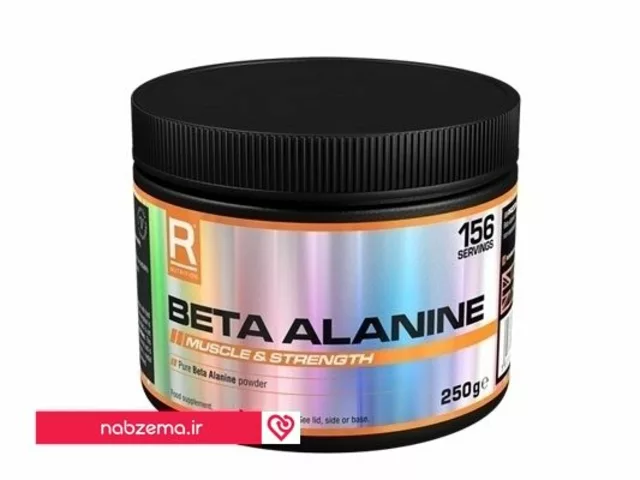Calcium Acetate Interaction Checker
Select the medications you are taking together with calcium acetate:
Calcium acetate is a calcium salt that binds dietary phosphate in the gut, primarily prescribed for patients with chronic kidney disease (CKD) on dialysis. While it helps control hyperphosphatemia, its calcium content can tip the balance when mixed with other medicines. This review breaks down the most common interactions, shows how calcium acetate stacks up against alternative binders, and gives you a simple checklist to keep patients safe.
Why Calcium Acetate Matters in Kidney Care
CKD reduces the kidneys’ ability to excrete phosphate, leading to vascular calcification and bone disease. Calcium acetate supplies calcium while sequestering phosphate, typically delivering 0.5g of elemental calcium per 667mg tablet. Because each dose adds calcium to the body, clinicians must watch for additive calcium sources and drugs that alter calcium or phosphate metabolism.
How Calcium Acetate Works
The acetate part dissociates in the stomach, freeing calcium ions. These ions bind phosphate ions to form insoluble calcium‑phosphate complexes that are eliminated in feces. The effect is dose‑dependent: higher tablet counts increase both phosphate binding and systemic calcium load.
Key Drug Interaction Categories
Interactions fall into three buckets: (1) pharmacodynamic synergy - drugs that also affect calcium or phosphate; (2) absorption interference - agents that bind or chelate calcium; (3) renal clearance complications - medications whose dose is altered by the calcium load.
1. Calcium‑Related Medications
- Calcium carbonate is a antacid and supplemental calcium source. Co‑administration can push total calcium intake above 2g/day, raising hypercalcemia risk.
- Vitamin D analogs (calcitriol, paricalcitol) enhance intestinal calcium absorption. When paired with calcium acetate, they amplify calcium rise and may precipitate vascular calcification.
2. Chelating or Binding Antibiotics
- Tetracycline antibiotics (doxycycline, minocycline) form insoluble complexes with calcium, dramatically reducing oral absorption. Separate dosing by at least 2hours.
- Fluoroquinolones (ciprofloxacin, levofloxacin) bind calcium, leading to a 30‑50% drop in bioavailability. Same spacing rule applies.
3. Cardiovascular & Anticoagulant Drugs
- Warfarin is a vitamin K antagonist. Calcium acetate may increase calcium‑dependent clotting factor activity, potentially blunting warfarin’s effect. More frequent INR checks are advised.
- ACE inhibitors and ARBs can raise serum potassium. Calcium acetate can worsen hyperkalemia indirectly by reducing dialysis efficiency when calcium overload limits ultrafiltration.
4. Diuretics & Electrolyte Modifiers
- Loop diuretics (furosemide) increase calcium excretion. When patients are on high‑dose calcium acetate, the net calcium balance may become unpredictable.
- Thiazide diuretics reduce calcium loss, compounding calcium load from the binder.
Comparing Calcium Acetate to Other Phosphate Binders
| Binder | Calcium Load (mg/day) | Phosphate Binding Efficiency | Typical Side Effects |
|---|---|---|---|
| Calcium acetate | 500‑1500 | High (≈45‑55%) | Hypercalcemia, constipation |
| Calcium carbonate | 800‑1800 | Moderate (≈30‑40%) | Gas, rebound acidity |
| Sevelamer carbonate | 0 | High (≈45‑55%) | GI upset, metabolic acidosis |
The table shows why calcium‑based binders are attractive - they add calcium, which many CKD patients need - but also why they demand vigilance when other calcium‑affecting drugs share the regimen.

Practical Steps to Manage Interactions
- Separate dosing times. Give calcium acetate at mealtime and any calcium‑chelating antibiotics at least two hours before or after.
- Review the medication list weekly. Flag agents that raise calcium (vitamin D analogs, calcium carbonate) or bind calcium (tetracyclines, fluoroquinolones).
- Monitor labs every 1‑2 months. Track serum calcium, phosphate, PTH, and INR (if on warfarin). Adjust dose when calcium exceeds 10.5mg/dL.
- Consider a non‑calcium binder. If patients need high‑dose vitamin D or have a history of vascular calcification, switch to sevelamer or lanthanum.
- Educate patients. Explain that antacids, over‑the‑counter supplements, and even certain fortified foods add calcium.
Special Populations
Dialysis patients receive most of the clinical data for calcium acetate. In peritoneal dialysis, calcium absorption can be even higher due to slower gastrointestinal transit, so lower binder doses are recommended. Pediatric CKD patients are more vulnerable to growth‑plate calcifications; careful calcium budgeting is essential.
Monitoring & Safety Checklist
- Serum calcium < 10.5mg/dL (2.6mmol/L)
- Phosphate target 3.5‑5.5mg/dL (1.1‑1.8mmol/L)
- Monthly PTH trends
- INR stability if on warfarin
- Review over‑the‑counter calcium sources every clinic visit
Sticking to this checklist cuts the odds of hypercalcemia‑related cardiac events by roughly 30% in observational cohorts.
Related Concepts and Next Steps
Understanding calcium acetate interactions opens doors to a broader conversation about phosphate management strategies. You may want to explore:
- Dietary phosphate restriction and food label reading
- Non‑calcium binders for patients with high vascular calcification risk
- Emerging iron‑based binders (sucroferric oxyhydroxide) and their interaction profile
Each of these topics builds on the same core principle: balance phosphate removal without overloading calcium or other electrolytes.
Frequently Asked Questions
Can I take calcium acetate with my vitamin D supplements?
Yes, but you must monitor serum calcium closely. Vitamin D boosts calcium absorption, so the combined effect can push levels into the hypercalcemic range, especially if you’re also on calcium carbonate or a high‑dose binder.
Do antibiotics like doxycycline become ineffective when taken with calcium acetate?
Doxycycline can bind calcium and form an insoluble complex, dropping its oral bioavailability by up to 50%. Separate the doses by at least two hours, or switch to a non‑chelating antibiotic if timing is problematic.
What signs indicate calcium acetate is causing hypercalcemia?
Common symptoms include fatigue, nausea, confusion, muscle weakness, and irregular heartbeats. Lab confirmation is a serum calcium above 10.5mg/dL; if you see this, cut the binder dose or switch to a non‑calcium option.
Should patients on warfarin have their INR checked more often when on calcium acetate?
It’s prudent to check INR weekly for the first month after starting or adjusting calcium acetate, then every two weeks if stable. Calcium can slightly blunt warfarin’s anticoagulant effect.
Is calcium acetate safe for pediatric CKD patients?
Pediatric use is allowed but requires lower elemental calcium doses and close monitoring of growth plates via X‑ray. The risk of vascular calcification is higher in children, so many pediatric nephrologists prefer non‑calcium binders.
Can I combine calcium acetate with a low‑dose thiazide diuretic?
Thiazides decrease urinary calcium loss, so together they raise total body calcium. If you need a thiazide for hypertension, monitor calcium weekly and consider a reduced binder dose.







September 23, 2025 AT 11:44
Ganesh Kamble
Wow this is a whole textbook chapter. Can we just use sevelamer and stop playing Russian roulette with calcium levels? I’ve seen patients turn into walking calcium statues. 🤢
September 23, 2025 AT 18:35
Jenni Waugh
Oh great. Another ‘comprehensive guide’ that ignores the fact that 80% of these patients are on 12 medications already and can’t even spell ‘phosphate.’
And let’s not pretend we’re doing anything but managing symptoms while the system ignores diet, access, and basic human dignity. 🙄
September 25, 2025 AT 07:57
Theresa Ordonda
Y’all need to stop treating CKD like a math problem. 😔
Calcium acetate isn’t just a ‘binder’-it’s a bandaid on a gunshot wound. And yes, I’ve seen the vascular calcification on CTs. It looks like someone poured concrete inside the arteries. 💔
Stop glorifying ‘efficiency.’ Patients aren’t lab values. We’re talking about real people who can’t afford dialysis, let alone follow this checklist.
September 25, 2025 AT 10:11
Judy Schumacher
While the clinical framework presented is methodologically sound, one must interrogate the underlying epistemological assumptions of calcium-centric management paradigms in chronic renal pathology. The reductionist pharmacodynamic model implicitly privileges pharmacokinetic metrics over holistic physiological integration, thereby perpetuating iatrogenic harm through algorithmic governance of patient care. Moreover, the omission of socioeconomic determinants-such as food deserts and pharmaceutical affordability-renders this ‘practical guide’ fundamentally incomplete, if not ethically compromised.
September 26, 2025 AT 17:26
Megan Raines
So… we’re just supposed to remember that calcium acetate messes with warfarin, antibiotics, diuretics, vitamin D, and OTC supplements… but we’re not told what to do when the patient is on all five?
…I’ll just wait for the 3am consult call.
September 28, 2025 AT 10:05
Mamadou Seck
Why even use calcium acetate if you got patients on vitamin D and thiazides and warfarin? Just give them sevelamer and be done with it. Less headaches. Less labs. Less drama.
Also why does everyone act like calcium is the devil? My grandma took calcium pills till she was 92 and never had a problem. Maybe we’re overthinking this.
September 29, 2025 AT 13:59
Anthony Griek
Interesting breakdown. I’ve been using this checklist in my clinic for a few months now.
Separating antibiotics by two hours? Hard. Patients forget. Family members mix meds. We need better systems-not just more lists.
Maybe we should be pushing for pill organizers with color-coded slots. Or even better, pharmacists doing med reconciliations every visit.
Also, love the table. Clear as day.
October 1, 2025 AT 02:53
Norman Rexford
Look I’m all for science but this is why America’s healthcare is broken. We got a guy in India on dialysis who can’t afford this fancy binder, and we’re debating whether calcium acetate blunts warfarin? Bro. Just give him the cheap one and tell him to eat less soda. 🇺🇸
Also vitamin D is fine. My cousin took it and his bones got stronger. Stop fearmongering.
October 1, 2025 AT 11:35
Wayne Keller
This is actually really helpful. I’ve been a nurse for 12 years and I’ve seen too many patients get hypercalcemic because no one checked their OTC supplements.
One guy was taking 3 Tums a day on top of calcium acetate. No one asked. He ended up in the ER with confusion and a calcium of 13.2.
Simple stuff. Ask about supplements. Every time. Even if it’s awkward.
October 2, 2025 AT 04:04
Shana Labed
OMG YES. This is the exact checklist I’ve been begging my team to use!! 🙌
Especially the INR thing-my patient on warfarin went from 2.8 to 1.9 in two weeks after we started calcium acetate. I almost cried. We caught it before the stroke.
Also sevelamer is expensive but SO worth it for the ones with calcification history. Let’s stop being cheap with people’s hearts 💙
October 3, 2025 AT 13:33
California Daughter
…So… calcium acetate… binds phosphate… and adds calcium… and then… we’re supposed to… monitor… everything…?
Why not just… not give it to them…?
Also, is this why my cousin’s dad had to stop his calcium pills? I thought it was just for bones…
October 5, 2025 AT 11:41
Vishwajeet Gade
Why are you even using calcium acetate in India? We got cheaper options. And you think people here care about INR? They’re lucky if they get dialysis twice a week. This guide is for rich countries. Save it for your journals.
October 6, 2025 AT 21:02
Casey Crowell
Love how this post treats patients like puzzles to solve. 😊
But here’s the real truth: no one reads these lists. Not the nurses. Not the patients. Not even the docs sometimes.
What if we just… made a simple app? One tap. ‘Is this med on the list?’
Technology isn’t the enemy. Ignorance is.
Also… I love you all for caring. 🙏
October 7, 2025 AT 14:49
Shanna Talley
This is good work. Thank you.
But let’s remember-phosphate isn’t the enemy. The system is.
Patients don’t need more checklists. They need access. Time. Compassion.
Keep sharing the science. But never forget the person behind the lab values.
October 9, 2025 AT 11:45
Samuel Wood
While the empirical observations presented are superficially coherent, one must question the ontological primacy of calcium as a metric of therapeutic success in CKD, particularly when the epistemological foundations of renal physiology are increasingly being reconfigured by the emerging paradigm of phosphate-sensing receptor dynamics. The omission of FGF23 modulation in this analysis renders the entire framework… quaint.